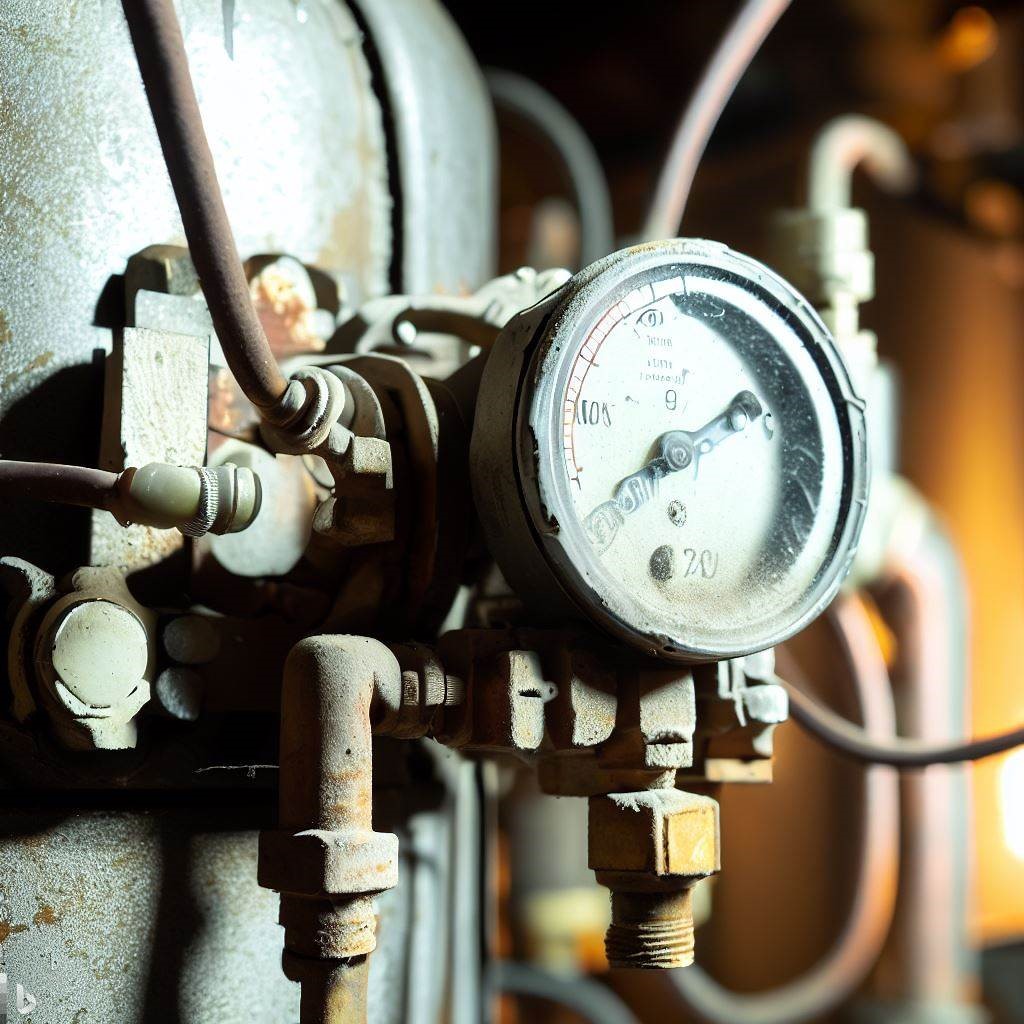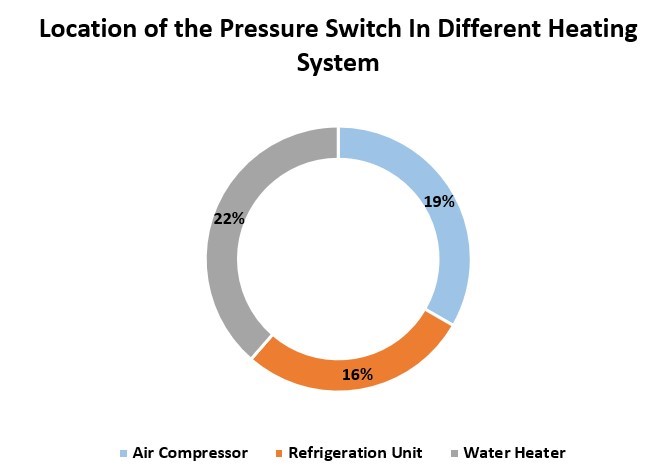Table of Contents
The pressure switch on a furnace is essential for the unit’s functioning. It helps detect if there is enough suction from the inducer motor for safe gas combustion in the heat exchanger.
In this blogpost, we will learn the insights and use of pressure switches on the furnaces.
What is a Pressure Switch?

Furnaces need consistent air flow and the right temperature, so pressure switches are the components that are must for a furnace. Without them, furnaces can’t work properly or safely.
Pressure switches are a must for furnace systems. They keep an eye on the air pressure and make sure the system runs well and safely.
How does pressure switch in a furnace work?
The pressure switch is essential for a furnace’s proper functioning. It monitors air pressure and signals the control board if there’s a drop – preventing damage.
Not all furnaces have pressure switches; they are usually found in high-efficiency models.
These systems need adequate airflow for efficient combustion, making air pressure monitoring critical.
It has two connections connected to furnace hoses.
- One side of the switch is connected to the negative pressure
- While the other to atmospheric pressure
The pressure switch comprises a diaphragm, hose and port. It senses the air pressure in or outside the flue pipe depending on the inducer fan.
The switch conveys the info to the control board via a tube.
An ohm meter can check if the switch is activating correctly at the right suction levels. This device stops exhaust fumes from entering your home.
Vent pipe debris or inducer motor faults can damage the switch, leading to negative pressure problems.
They have an auto ‘on’ and ‘off’ function which prevents any disasters like fires or explosions by stopping the system if the pressure levels get too high.
You can even adjust the pressure limits with their adjustable set points.
Voltage signals are sent from the switch to a circuit board which then tells the system what to do – whether it’s to start or stop.
When the furnace starts, negative pressure pulls down on one side of the switch and activates it.
If airflow is blocked or decreased, this negative pressure drops, deactivating the switch and gas flow.
Importance of the Pressure Switch in a Furnace
To ensure the proper functioning of your gas furnace, understanding the importance of the pressure switch is crucial.
With the pressure switch serving as a safety feature, you can prevent damage to your system and avoid exhaust fumes from entering your living space.
Safety Feature Of Switch In Furnace
The pressure switch is essential for furnace installation. It monitors air pressure and prevents damage to the unit.
Here’s 5 points to consider:
- Protects against CO poisoning.
- Monitors airflow for efficient burning.
- System shutdowns can damage components if faulty.
- Different models and configurations available.
- Optimal functioning requires proper installation.
Regulating Air Pressure Of Pressure Switch
Controlling air pressure efficiently helps the combustion process. This leads to fuel economy, reduced carbon footprint, and improved performance and longevity of the furnace.
Here is a 4-step guide to regulating air pressure:
- Consult the manufacturer’s instructions for recommended operating pressures.
- Install a pressure switch or check it if already installed.
- Change the pressure switch to regulate airflow and fuel input.
- Keep tabs on air pressure regularly with a manometer. Make changes as necessary.
Identifying the Pressure Switch In A Furnace
To identify the pressure switch on your furnace, troubleshooting and locating the switch is crucial.
Troubleshooting a Furnace Pressure Switch
Finding a furnace pressure switch can be tricky, but it is essential to ensuring your heating system runs efficiently.
| Step | Instructions |
| 1 | Switch off the power before inspection or repair. |
| 2 | Remove the pressure switch from its spot and look for signs of damage like corrosion, cracks, or loose wires. |
| 3 | Reattach all the wires and put the switch back at its original place. |
| 4 | Turn the power back on and check there’s enough voltage at each terminal. |
Location of the Pressure Switch

Refer to the table for more info on where pressure switches may be located in various devices.
| Device | Pressure Switch Location |
| Air Compressor | On Top of Tank |
| Refrigeration Unit | Near Condenser Coils or Evaporator |
| Water Heater | Near Gas Valve or Temperature Control Panel |
Testing the Pressure Switch
To test the pressure switch on your furnace, with its components such as the inducer motor, flue pipe, hose, and diaphragm, you need to follow some tips.
Using an Ohm Meter
A great way to check the pressure switch is by using an ohm meter.
Here’s what you need to do:
- Switch off the power supply before testing.
- Grab your ohm meter and set it to measure resistance in ohms (Ω).
- Make sure the range on your meter is higher than the resistance value.
- Put one lead of the ohm meter on each terminal of the pressure switch. Make a note of any readings.
- If no resistance is detected or an open circuit is displayed on your meter, it means the pressure switch has failed.
Checking the Reading
- Verify the electrical supply and disconnect power to the machine.
- Use a multimeter to check the pressure switch’s readings.
- Insert one probe into each terminal while it is on and note the readings.
- Compare the readings to the manufacturer’s specifications.
- If it doesn’t match, replace or adjust the switch according to the manufacturer’s instructions.
Reasons for Pressure Switch Failure
To understand the reasons behind the failure of the pressure switch on your furnace, you need to be aware of a few things.
Defective Diaphragm
A defective membrane can lead to pressure switch failure. The diaphragm may be torn due to too much use, or contact with corrosive substances.
Poor equipment maintenance, like not cleaning away dirt, dust, leakage, or oil, can also cause impurities in the flow of mechanical components, damaging the diaphragm.
To stay safe, regular maintenance and inspections following the manufacturer’s guidelines are key.
Keep devices away from materials that may corrode them and keep machinery clean.
Draft pressure switch failure
A malfunctioning pressure switch can have many root causes. These can be electrical or mechanical, from the environment, or from wear and tear.
Electrical failures are a frequent cause of pressure switch trouble. This happens when the circuitry and switch don’t connect properly.
Mechanical failures can also arise, from harm to vital parts like springs, pistons or diaphragms. This can be due to erosion, fatigue, stress, or rust.
The environment affects pressure switch performance too – moisture in electrical links damages them, leading to switch failure.
To stay clear of these problems, inspect the electrical connections and how they attach to mechanical components regularly.
Negative pressure
Negative pressure build-up in HVAC systems is caused by clogged filters, blocked ducts, failing fans and missing dampers.
Ambient conditions like altitude changes and temperature fluctuations can also trigger negative pressures.
Pressure switch maintenance is essential to avoid serious problems. It’s like flossing teeth.
Maintaining and Replacing the Pressure Switch
To maintain and replace the pressure switch with ease and efficiency, here are some insights on how to recognize the signs of a faulty pressure switch.
Signs of a Faulty Pressure Switch
The pressure switch is an important part of many applications, like HVAC systems and water pumps. When it malfunctions, it can cause serious problems.
Here are some signs to look out for:
- The device doesn’t turn on or off as it should
- It’s making too much noise or vibrating
- It won’t stop, even after reaching the setpoint
Cleaning and Replacing the Pressure Switch
The pressure switch is essential for machines. Cleaning and replacing it needs to be done regularly.
Here are four steps to do that:
- Switch off the power.
- Remove the cover.
- Clean or change the switch contacts, if needed.
- Put the switch back and switch the power on to the test.
Conclusion
It’s key to know where your furnace pressure switch is. This safety feature guard against bad air pressure, which can disrupt ventilation and cause fumes. Ignoring a pressure switch issue can cause big problems, or even harm. Be sure you know safety measures to keep the right air flow indoors and out during combustion.
